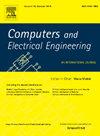A weighted Gompertz fuzzy ranking-based ensemble model for diabetic foot ulcer detection in skin and thermal imagery
IF 4
3区 计算机科学
Q1 COMPUTER SCIENCE, HARDWARE & ARCHITECTURE
引用次数: 0
Abstract
Diabetic Foot Ulcers (DFUs) pose a significant health risk, often leading to severe complications in diabetic patients. Early and accurate detection of DFUs is crucial for effective intervention and management. This paper introduces an innovative ensemble methodology that leverages a weighted Gompertz function-based fuzzy ranking strategy for accurate and reliable DFU detection. The proposed technique adopts an ensemble framework where the weighted Gompertz function forms fuzzy rankings for the three fundamental classifiers, and their decision scores are integrated to yield final predictions on test cases. The ensemble model is constructed using three transfer learning-based models: InceptionV3, MobileNet, and InceptionResNetV2, which generate decision scores that are subsequently fused. The method showcases remarkable enhancements in classification accuracy, thoroughly evaluated on a dataset of 1055 foot images. Grad-CAM analysis showcases the models' focus on relevant regions, while ablation studies and comparison with the traditional ensemble method confirm our approach's reliability. These results highlight the crucial significance of hyperparameter tuning in enhancing model performance. Furthermore, our ensemble's efficacy extends to thermal imagery domains, validated by experiments on a diverse dataset comprising thermal images of diabetic foot cases. This adaptability across imaging modalities positions our methodology as a useful diagnostic tool, potentially aiding medical practitioners in efficiently detecting diabetic foot ulcers in both skin and thermal imagery domains. The proposed approach achieves an accuracy of 99.53 % on the initial dataset of foot images and attains a remarkable accuracy of 93.60 % on a separate dataset comprising thermal images. By improving diagnostic accuracy and adaptability, this approach can facilitate early DFU detection, reducing the risk of complications and enhancing patient outcomes.
基于加权Gompertz模糊排序的集成模型在皮肤和热图像中检测糖尿病足溃疡
糖尿病足溃疡(DFUs)是一种严重的健康风险,经常导致糖尿病患者出现严重的并发症。早期和准确的发现对于有效的干预和治疗至关重要。本文介绍了一种创新的集成方法,该方法利用基于加权Gompertz函数的模糊排序策略进行准确可靠的DFU检测。所提出的技术采用一个集成框架,其中加权Gompertz函数对三个基本分类器形成模糊排名,并将它们的决策分数集成以产生对测试用例的最终预测。集成模型是使用三个基于迁移学习的模型构建的:InceptionV3、MobileNet和InceptionResNetV2,它们生成随后融合的决策分数。该方法在分类精度方面显示出显着的增强,在1055英尺图像的数据集上进行了全面评估。Grad-CAM分析显示了模型对相关区域的关注,而烧蚀研究以及与传统集成方法的比较证实了我们方法的可靠性。这些结果突出了超参数整定在提高模型性能方面的重要意义。此外,我们的集成效果扩展到热图像领域,通过在包括糖尿病足病例热图像的不同数据集上的实验验证。这种跨成像模式的适应性使我们的方法成为一种有用的诊断工具,潜在地帮助医疗从业者在皮肤和热成像领域有效地检测糖尿病足溃疡。该方法在初始足部图像数据集上达到99.53%的准确率,在包含热图像的单独数据集上达到93.60%的显著准确率。通过提高诊断的准确性和适应性,这种方法可以促进DFU的早期发现,降低并发症的风险,提高患者的预后。
本文章由计算机程序翻译,如有差异,请以英文原文为准。
求助全文
约1分钟内获得全文
求助全文
来源期刊

Computers & Electrical Engineering
工程技术-工程:电子与电气
CiteScore
9.20
自引率
7.00%
发文量
661
审稿时长
47 days
期刊介绍:
The impact of computers has nowhere been more revolutionary than in electrical engineering. The design, analysis, and operation of electrical and electronic systems are now dominated by computers, a transformation that has been motivated by the natural ease of interface between computers and electrical systems, and the promise of spectacular improvements in speed and efficiency.
Published since 1973, Computers & Electrical Engineering provides rapid publication of topical research into the integration of computer technology and computational techniques with electrical and electronic systems. The journal publishes papers featuring novel implementations of computers and computational techniques in areas like signal and image processing, high-performance computing, parallel processing, and communications. Special attention will be paid to papers describing innovative architectures, algorithms, and software tools.
 求助内容:
求助内容: 应助结果提醒方式:
应助结果提醒方式:


